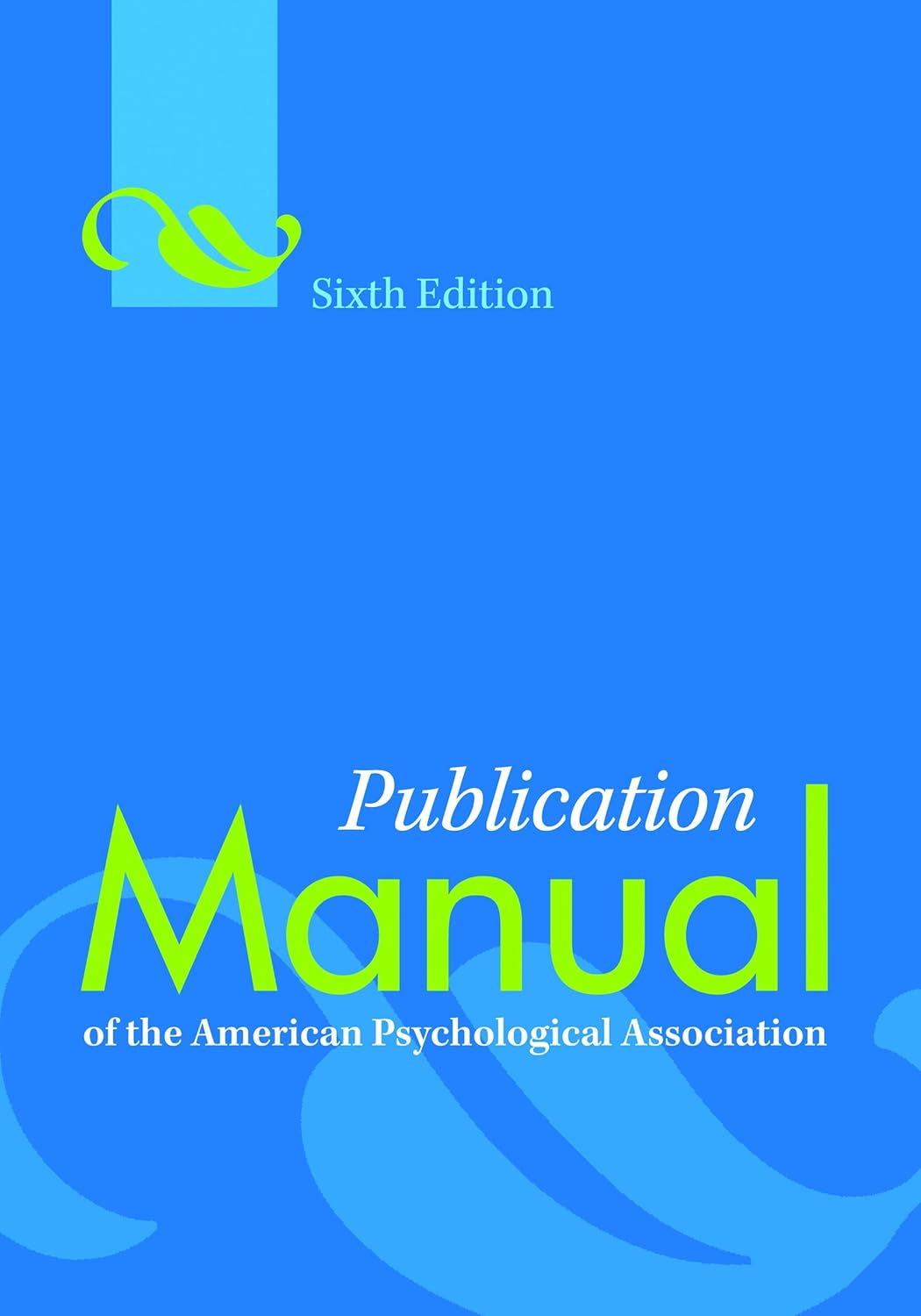Citation Help: APA 6th Edition
WARNING
The information and examples provided on this set of pages describing APA citation style are based on the 6th (2010) edition of the Manual. A newer 7th edition is now published and available at many of our libraries across campus. The new APA 7th edition guide is now available.
A Brief Intro to APA
What is it?
- APA style refers to a specific formatting style created by the American Psychological Association.
- APA is most commonly used by students and scholars in the social sciences when writing papers and citing sources.
How does APA work?
- APA Style most commonly uses a brief in-text citation and a full citation on a reference page.
Where can I find Examples?
- Examples of APA citations can be found by source in the box on below or from the drop-down APA menu.
What you'll find in the APA Publication Manual
Publication Manual of the American Psychological Association
The Publication Manual of the American Psychological Association is broken down into eight parts covering all aspects of publishing.

Part I: Writing for the Behavioral and Social Sciences
This is an introduction to publication types in the social sciences, like literature reviews, case studies, empirical studies, and articles of all kinds. This section also discusses the ethical responsibilities of the researcher, including avoiding plagiarism, respecting intellectual property rights, and how to handle situations like conflicts of interest and determining authorship.
Part II: Manuscript Structure and Content
Social science research is presented using standard formatting so that all articles share a similar organization. This allows readers to quickly and more accurately absorb the information presented in the publication. Not only does this section explain the purposes and formatting for each section of a standard social sciences publication, it also provides some examples for your consideration.
Parts III-IV: Writing Clearly and Concisely - Mechanics of Style
Learning to write in a scholarly voice that is precise and engaging takes time, effort, and helpful chapters in publication manuals that teach you the tricks of the trade. Learn how to present your research using appropriate terms and in a scholarly tone or discover once and for all what your professor meant when they said that your "verbs and subjects don't agree." Also discussed are the correct uses of punctuation, otherwise known as the correct uses of the semicolon and other fascinating facts.
Part V: Displaying Results
Learn how to format figures, tables, and graphs that illustrate your data.
Part VI: Crediting Sources
Learn when to cite, the difference between quotation and paraphrase, and how to obtain permissions from copyright holders. This section also describes the nuts and bolts of how citations are put together and why, from author's name(s) all the way to page numbers and DOIs.
Part VII: Reference Examples
This is where you will find sample citations for a wide variety of source types. For any source type not covered in this online citation guide, check Chapter 7, and find the information to structure your citation.
Part VIII: The Publication Process
The last chapter discusses how the peer-review process works and your rights and responsibilities as an author.
![]() Available for purchase in print and as an e-book
Available for purchase in print and as an e-book
APA Citation Examples by Source Type
Ask a Librarian
Librarians are available to help you with your questions. Please don't hesitate to contact us with any questions you might have regarding citation styles, citation management, etc.
Ask a question below or contact your subject specialist librarian for more help!
Useful Resources for APA Citation
Publication Manual of the American Psychological Association
Call Number: BF76.7 .P83 2010bConcise Rules of APA Style
Call Number: BF76.7 .C66 2010APA Style Simplified by
Call Number: Online AccessMastering APA Style
Call Number: BF76.8 .G452 2010Cite Them Right by
Call Number: PN171.F56 P43 2016